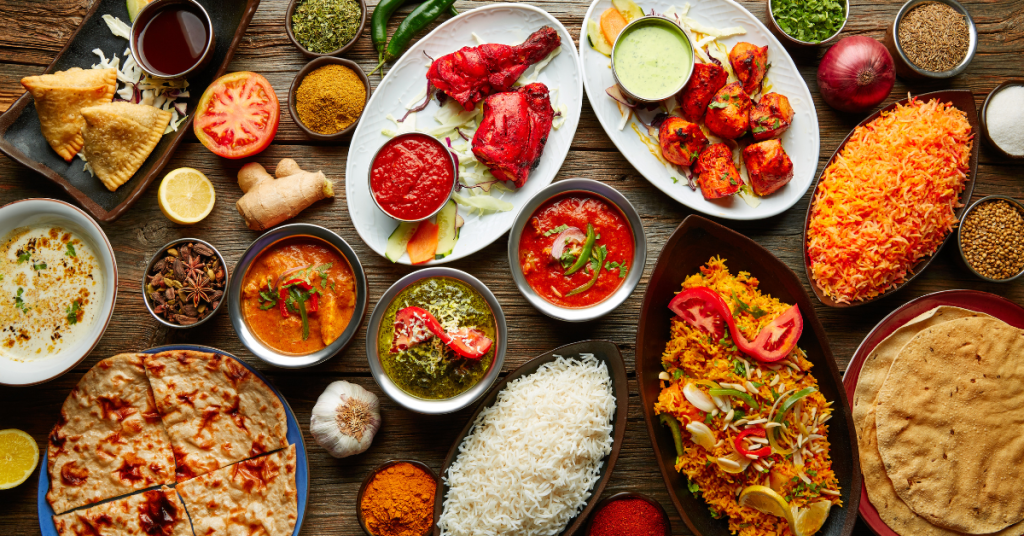Indian cuisine is a treasure trove of flavors, aromas, and textures that have captivated the taste buds of people worldwide. As the popularity of Indian food continues to grow, it’s essential to explore what makes it unique and why it has become a global culinary sensation. In this article, we will delve into the diverse and delectable world of Indian cuisine, offering insights that will not only educate but also inspire foodies and individuals living in the USA looking for Indian dining options.
Regional Diversity
India’s culinary landscape is a sprawling mosaic, with each region offering its own unique and rich culinary tradition. The country’s vast size and diverse geography contribute to this incredible regional diversity. From the coastal delights of Kerala to the hearty Punjabi cuisine of the North, each region has its own signature dishes, ingredients, and cooking techniques.
In the South, coconut, tamarind, and curry leaves are commonly used to create tangy and spicy flavors in dishes like dosas and sambar. In the North, dairy products like ghee and paneer play a prominent role in creating rich, creamy curries. The North is also famous for its tandoori dishes, cooked in a clay oven known as a tandoor, which imparts a smoky flavor and succulence to meats and bread.
Vegetarian and Vegan-Friendly
Indian cuisine is a paradise for vegetarians and vegans, offering an extensive array of plant-based options that are not only delicious but also nutritious. One of the reasons behind the prevalence of vegetarianism in Indian culture is the influence of religion. Hinduism, Jainism, and Buddhism promote vegetarianism as a way of life, and this has deeply influenced Indian cooking.
Vegetarian dishes like paneer tikka, aloo gobi, and dal makhani showcase the versatility of Indian vegetarian cuisine. Plant-based proteins like legumes, lentils, and chickpeas are central to many Indian dishes, making them not just flavorful but also a good source of nutrition.
The Art of Spices
As mentioned earlier, spices are at the heart and soul of Indian cooking. Some of the most commonly used spices in Indian cuisine include cumin, coriander, cardamom, turmeric, and fenugreek. What makes Indian spice blends unique are the specific combinations and proportions of these spices, known as masalas.
Garam masala, for example, is a blend of spices that typically includes cinnamon, cardamom, cloves, and nutmeg. It imparts a warming and slightly sweet flavor to dishes. On the other hand, chaat masala combines amchoor (dried mango powder), cumin, and black salt to create a tangy and spicy seasoning used in street food.
The skillful use of spices in Indian cuisine is what elevates it to a level of culinary artistry. Chefs and home cooks alike take pride in their ability to balance and blend spices to create intricate and delicious dishes.
Tandoori Delights
Tandoori cuisine is a beloved subset of Indian cooking that’s cherished for its signature smoky flavors and succulent meats. At the heart of tandoori cooking is the traditional tandoor oven, a clay oven heated with charcoal or wood. The intense heat and the unique cooking method impart a distinct smokiness and tenderness to the meats, making tandoori dishes a favorite among both Indians and foreigners.
Tandoori chicken, marinated in a blend of yogurt and spices, is one of the most popular tandoori dishes. The yogurt not only adds flavor but also tenderizes the meat, resulting in a juicy and flavorful dish. Additionally, you’ll find tandoori variations of fish, lamb, and even vegetables.
Street Food Extravaganza
Indian street food is a world of its own, a vibrant and exciting culinary culture that offers quick, flavorful, and affordable bites. These street foods are enjoyed by people from all walks of life, and they add a layer of depth to Indian cuisine that is unparalleled.
From spicy chaats like pani puri and bhel puri to crispy pakoras and samosas, Indian street food is an explosion of flavors and textures. These dishes often combine sweet, sour, and spicy elements, creating a harmonious balance of tastes. The street food culture in India is not just about the food but also the experience of enjoying these dishes while standing at a bustling corner with friends and family.
In summary, the uniqueness of Indian cuisine lies in its rich tapestry of flavors, regional diversity, vegetarian and vegan-friendly options, the art of spices, tandoori delights, rice and bread staples, vibrant street food culture, and the ever-evolving world of fusion and modern Indian cuisine. It’s a culinary journey that keeps expanding and captivating food enthusiasts around the globe.
As you’ve delved into the fascinating world of Indian cuisine, we hope you’ve gained a deeper appreciation for its distinctive qualities. Whether you’re a seasoned foodie or someone new to Indian cuisine, the flavors and experiences that await you in Indian restaurants are bound to leave an indelible mark on your taste buds.
So, the next time you’re seeking a gastronomic adventure, don’t hesitate to explore your local Indian restaurant. Indulge in the magic of Indian flavors and share your culinary escapades with us.

